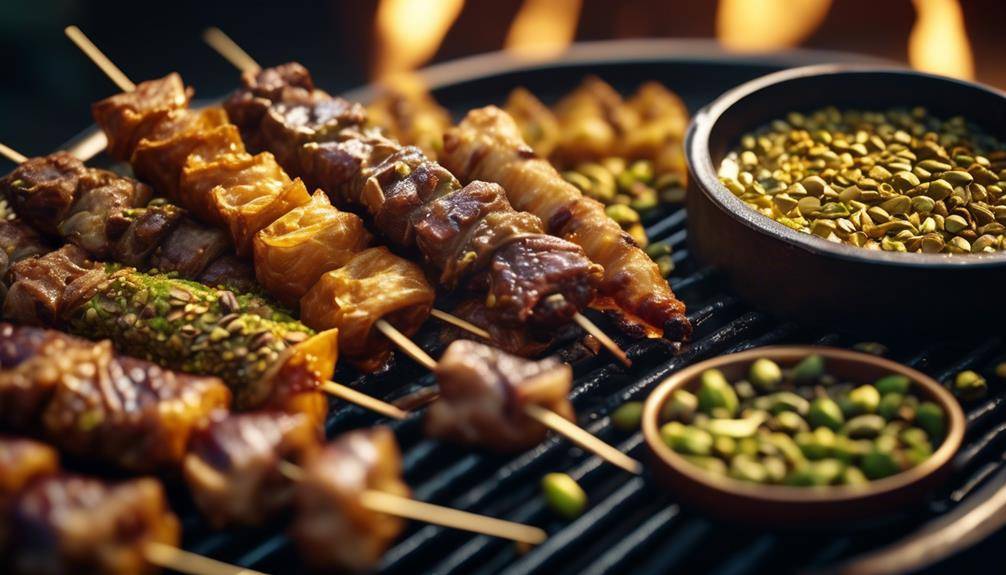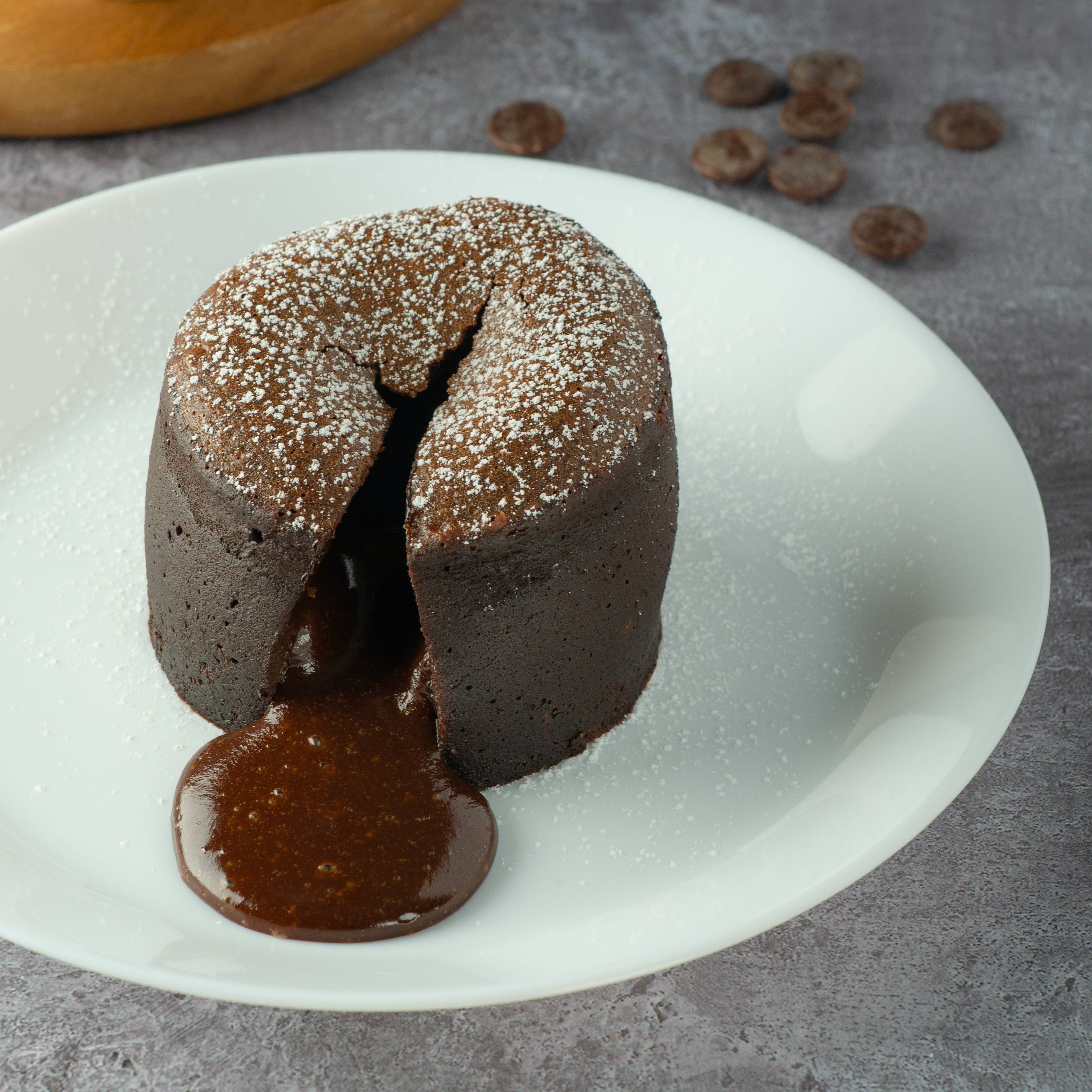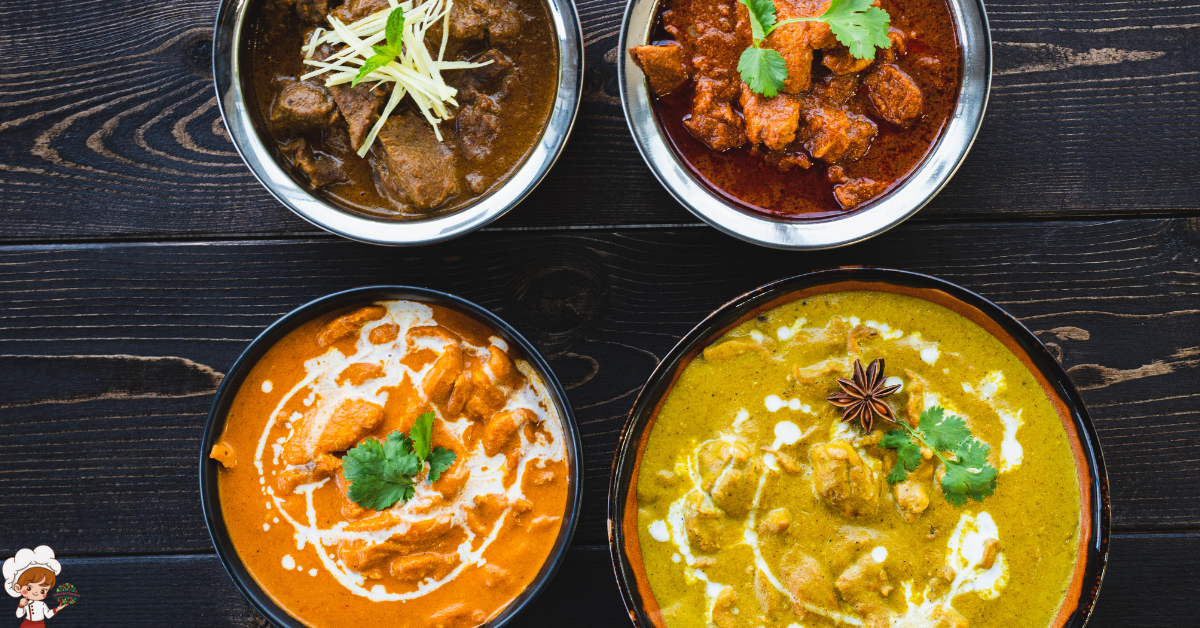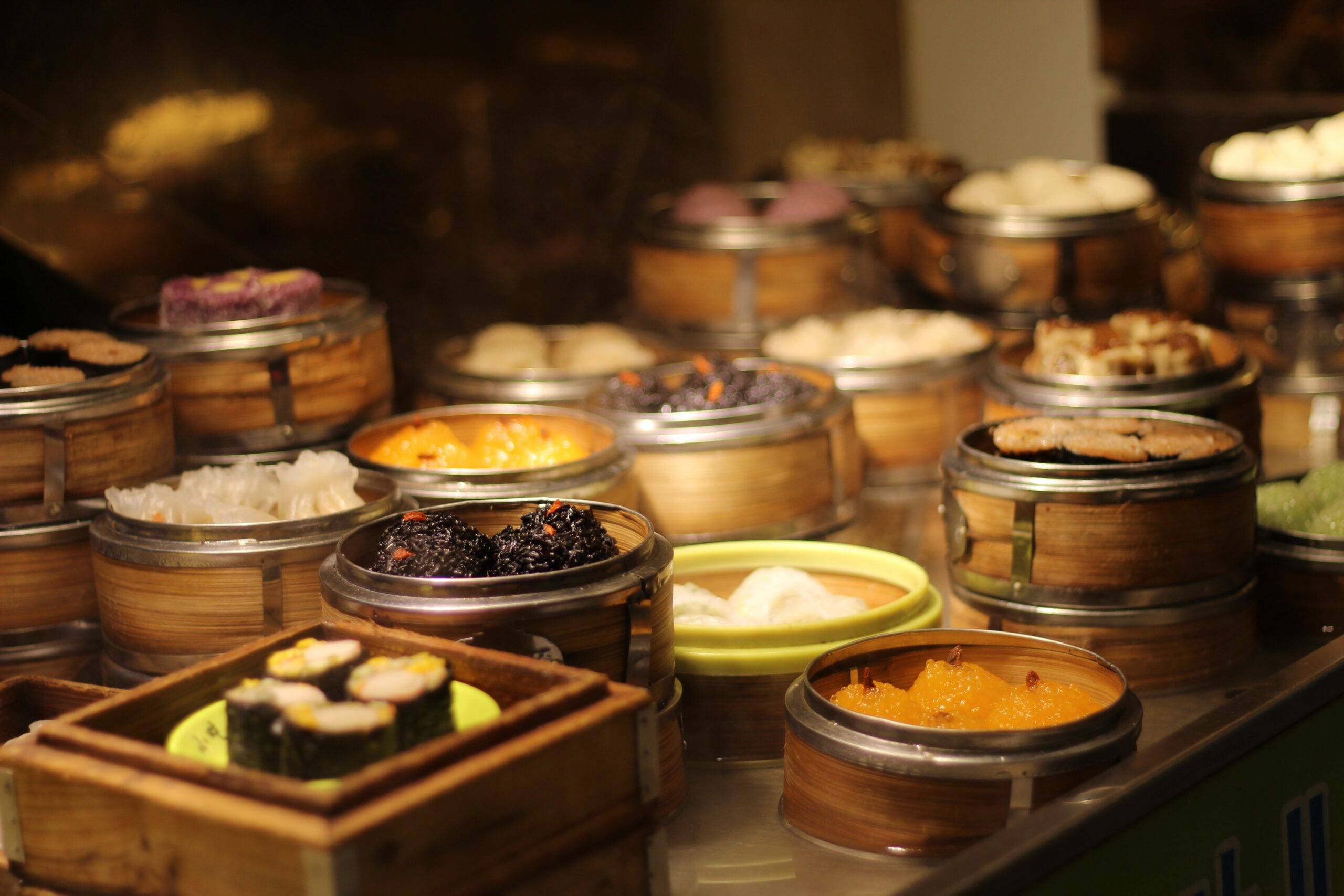Exciting Turkish Dishes Inspired By Ottoman Cuisine

Turkish Dishes Inspired By Ottoman Cuisine; Step into a culinary journey where each dish is a time capsule, preserving the rich history and cultural tapestry of the Ottoman Empire. Turkish cuisine, influenced by the opulence and grandeur of the Ottoman era, is a treasure trove of flavors and aromas that will transport you to a bygone era. From savory mezes to succulent kebabs, each dish tells a story, inviting you to savor the exquisite blend of spices and ingredients. So, get ready to embark on a gastronomic adventure and discover the tantalizing Turkish dishes that are inspired by the legacy of Ottoman cuisine.
Meze: A Taste of Turkish Appetizers
Meze, the delightful array of Turkish appetizers, offers a tantalizing introduction to the rich and diverse flavors of Ottoman cuisine. The presentation of meze is an art form in itself. Each dish is carefully arranged on a platter, showcasing the vibrant colors and textures of the ingredients. From the creamy hummus to the tangy yogurt dip, every bite is a burst of flavor that leaves you craving for more.
Traditional meze recipes have been passed down through generations, preserving the essence of Ottoman cuisine. One such recipe is the iconic stuffed grape leaves, also known as dolma. The tender grape leaves are filled with a mixture of rice, onions, and aromatic herbs, then gently simmered until tender. The result is a bite-sized treat that bursts with a combination of earthy flavors.
Another popular meze dish is the smoky eggplant dip, called baba ghanoush. The charred eggplant is mashed and mixed with tahini, garlic, and lemon juice, creating a creamy and tangy dip that pairs perfectly with warm pita bread. The smoky flavor of the eggplant adds depth to the dish, making it a favorite among both locals and visitors.
Meze is not just about the individual dishes, but also about the communal experience. It is often enjoyed with friends and family, as a prelude to the main meal. The variety of flavors and textures encourages sharing and conversation, creating a warm and convivial atmosphere.
Lahmacun: Turkish Pizza With a Twist
After indulging in the tantalizing array of meze dishes, it’s time to explore another culinary delight of Ottoman cuisine: Lahmacun, a Turkish pizza with a unique twist. Lahmacun is a thin and crispy flatbread topped with a flavorful mixture of ground lamb or beef, tomatoes, onions, and a blend of aromatic spices. The dough for Lahmacun is traditionally made with a combination of flour, water, yeast, and salt, resulting in a light and airy base that perfectly complements the rich toppings.
When it comes to Lahmacun, there are several variations and toppings that you can choose from to suit your taste preferences. Here are four options that will surely evoke an emotional response in your taste buds:
- Classic Lahmacun: This version stays true to the traditional recipe, featuring a generous layer of spicy lamb or beef mixture, topped with fresh parsley, tomatoes, and a squeeze of lemon juice. The combination of flavors creates a harmonious balance, with the tanginess of the lemon cutting through the richness of the meat.
- Vegetarian Lahmacun: For those who prefer a meat-free option, this variation substitutes the ground meat with a medley of vegetables such as mushrooms, bell peppers, and zucchini. The result is a lighter and fresher Lahmacun that is packed with vibrant flavors.
- Cheese Lover’s Lahmacun: If you’re a fan of cheese, this version is a must-try. It adds a layer of melted mozzarella or feta cheese on top of the meat mixture, resulting in a gooey and indulgent Lahmacun that will satisfy any cheese lover’s cravings.
- Spicy Lahmacun: For those who enjoy a kick of heat, this variation amps up the spice level by adding extra chili flakes or hot peppers to the meat mixture. The fiery flavors will ignite your taste buds and leave you craving for more.
With its crispy base and flavorful toppings, Lahmacun offers a unique twist on the traditional pizza. Whether you prefer the classic version or want to experiment with different variations, Lahmacun is a dish that will undoubtedly leave a lasting impression on your palate.
Dolma: Stuffed Goodness on a Plate
Dolma, a dish that showcases the artistry and creativity of Ottoman cuisine, presents a delightful combination of flavors and textures that will captivate your taste buds. This stuffed goodness on a plate is not only delicious but also offers a variety of options for vegetarians. While traditional dolma recipes typically feature meat fillings, there are numerous vegetarian alternatives that are equally satisfying.
One popular vegetarian option is the yaprak dolma, which uses grape leaves as the wrapping for the filling. The filling often consists of a mixture of rice, onions, herbs, and spices, creating a burst of flavors with every bite. The grape leaves impart a slightly tangy and earthy taste, adding a unique dimension to the dish. Yaprak dolma is a versatile dish that can be served as an appetizer, a side dish, or even a main course.
Another vegetarian variation of dolma is the dolmalik biber, which translates to stuffed peppers. These vibrant peppers are typically filled with a mixture of rice, onions, tomatoes, and various herbs and spices. The peppers impart a sweet and mildly spicy flavor to the filling, creating a harmonious balance of tastes. Dolmalik biber is a popular dish in the southeastern region of Turkey, where the climate is ideal for growing a variety of peppers.
In addition to vegetarian options, dolma recipes also vary across different regions in Turkey. For example, in the Black Sea region, dolma is often made with a mixture of rice, ground meat, and spices, and is served cold with a dollop of yogurt. In the Aegean region, dolma is made with a combination of rice, currants, pine nuts, and cinnamon, resulting in a sweet and savory flavor profile.
Kebabs: Grilled Perfection on Skewers
When it comes to kebabs, the meat choices are crucial. From tender lamb to succulent chicken, the type of meat you choose will determine the flavor and texture of your kebabs. Additionally, marinades and seasonings play a vital role in enhancing the taste of the grilled skewers. Whether you opt for a traditional blend of spices or experiment with unique flavors, the marinade is key to achieving that perfect balance of flavors. Lastly, mastering the grilling techniques is essential for achieving grilled perfection. From controlling the heat to ensuring even cooking, these techniques will elevate your kebabs to a whole new level.
Meat Choices for Kebabs
For the perfect kebab, selecting the right meat is crucial in achieving that grilled perfection on skewers. Here are four meat options that will take your kebabs to the next level:
- Lamb: Known for its rich flavor and tender texture, lamb is a popular choice for kebabs. Its natural fat content keeps the meat moist during grilling, resulting in juicy and succulent kebabs.
- Chicken: If you prefer a leaner option, chicken is a great choice. Marinating the chicken beforehand will help infuse it with flavor and keep it moist while grilling. Opt for boneless, skinless chicken thighs for the best results.
- Beef: For a hearty and robust kebab, beef is an excellent choice. Look for cuts like sirloin or ribeye, which have enough marbling to keep the meat flavorful and juicy when grilled.
- Fish: Don’t overlook seafood when it comes to kebabs. Fish like salmon or swordfish can be marinated and grilled on skewers for a delicious and healthy alternative.
Experiment with different meats and grilling techniques to discover your favorite kebab combinations. Remember, the key is to achieve that perfect balance of flavor, tenderness, and charred goodness on every skewer.
Marinades and Seasonings
To achieve the perfect balance of flavors, tenderness, and charred goodness on your kebabs, the marinades and seasonings you choose play a crucial role. Turkish cuisine offers a wide array of marinade recipes that add depth and complexity to your grilled meat. One popular marinade is the yogurt-based mixture, which includes ingredients like garlic, lemon juice, and various spices such as paprika and cumin. This marinade not only enhances the flavor profile of the meat but also tenderizes it, resulting in succulent and juicy kebabs.
Another common marinade is the olive oil and lemon juice combination, which imparts a refreshing citrusy flavor to the meat. For those who prefer a spicier kick, a marinade made with red pepper paste, garlic, and olive oil will add a fiery touch to your kebabs. Experimenting with different marinade recipes will allow you to create unique flavor profiles that will elevate your kebabs to grilled perfection.
Grilling Techniques for Perfection
Grilling kebabs to perfection requires mastering the art of skewering and cooking techniques that result in tender, juicy, and charred meat. Here are four grilling techniques that will take your kebabs to the next level:
- Direct Grilling: This technique involves placing the kebabs directly over the heat source. It creates a beautiful char on the outside while keeping the meat succulent and juicy on the inside.
- Indirect Grilling: For larger cuts of meat or vegetables that require longer cooking times, indirect grilling is the way to go. By placing the kebabs away from the direct heat, you allow them to cook slowly and evenly without burning.
- Skewer Alternation: To ensure even cooking, alternate the ingredients on the skewer. For example, place a piece of meat, followed by a vegetable, and then repeat. This prevents overcooking or undercooking certain ingredients.
- Marinating and Basting: Before grilling, marinate your kebabs to enhance the flavors and tenderize the meat. Additionally, basting with a flavorful sauce throughout the grilling process adds moisture and prevents the kebabs from drying out.
When it comes to grilling techniques for vegetables and seafood, the same principles apply. Just remember to adjust the cooking time accordingly to ensure perfectly grilled, flavorful results.
Pide: Turkish Flatbread at Its Finest
Pide, a delectable Turkish flatbread that draws its inspiration from the rich culinary traditions of the Ottoman Empire, showcases the perfect blend of flavors and textures that will transport you to the heart of Turkish cuisine. This versatile dish comes in various forms, with each region in Turkey having its own take on it. The pide variations range from the classic cheese and spinach-filled pide to the more adventurous combinations of lamb, beef, or seafood.
One of the defining features of pide is its toppings. Traditionally, it is topped with a variety of ingredients that complement each other harmoniously. The most common toppings include Turkish cheese, sucuk (a spicy sausage), minced meat, and vegetables. These toppings not only add flavor but also create a delightful contrast of textures. The cheese melts into a gooey goodness, while the sucuk adds a hint of spiciness. The minced meat, cooked to perfection, provides a savory element, and the vegetables add a refreshing touch.
The beauty of pide lies in its simplicity. The dough is made from a mixture of flour, water, yeast, and a pinch of salt. It is then rolled out into an oval shape and topped with the desired ingredients. The pide is then baked in a hot oven until the crust becomes golden brown and crispy.
Whether enjoyed as a quick snack or a full meal, pide offers a delightful taste of Turkish cuisine. Its rich history and wide range of flavors make it a favorite among locals and tourists alike. So, the next time you crave a taste of Turkey, indulge in this mouthwatering flatbread and let it transport you to the vibrant streets of Istanbul.
Baklava: Layers of Sweet Delight
Get ready to indulge in the rich history and delectable flavors of baklava. This iconic Turkish dessert has been delighting taste buds for centuries. From its traditional recipe, which involves layering crispy phyllo dough with a sweet nut filling and drenching it in fragrant syrup, to the various regional variations and flavors, baklava offers a sensory experience like no other.
Baklava’s Rich History
Baklava, a delectable dessert that has delighted taste buds for centuries, holds a rich history rooted in the opulence of the Ottoman Empire. Its cultural significance and global popularity have made it a beloved treat across the world. Here is a closer look at Baklava’s rich history:
- Influences from the Ottoman Empire: Baklava’s origins can be traced back to the kitchens of the Ottoman Empire, where it was enjoyed by the sultans and the royal court. Its intricate layers and delicate flavors were a symbol of luxury and refinement.
- Spread across the world: As the Ottoman Empire expanded, so did Baklava’s reach. It quickly gained popularity in neighboring countries and eventually made its way to Europe, where it became a staple in Turkish communities.
- Enduring traditions: Despite its widespread popularity, Baklava has managed to retain its traditional preparation methods and recipes. Families pass down their secret techniques from generation to generation, keeping the art of making Baklava alive.
- A global favorite: Today, Baklava is enjoyed by people from all walks of life, transcending cultural boundaries. Its flaky layers, sweet honey syrup, and nutty filling continue to captivate taste buds and leave a lasting impression.
Baklava’s rich history is a testament to its cultural significance and global appeal. Whether enjoyed as a special treat or a part of festive celebrations, this sweet delight continues to bring joy to people around the world.
Traditional Baklava Recipe
The legacy of Baklava’s rich history extends beyond its cultural significance, as its traditional recipe showcases the artistry and skill required to create this exquisite dessert. Baklava variations can be found across different regions, each with its own unique twist on the classic recipe. The traditional version typically consists of layers of phyllo pastry, filled with a mixture of finely ground nuts, such as pistachios or walnuts, and sweetened with a syrup made from honey or sugar.
The layers are meticulously assembled, brushed with butter or oil, and baked until golden and crispy. The result is a decadent treat that is both rich and delicate, a testament to the culinary expertise of the Ottoman era. Today, baklava continues to be cherished not only for its delicious taste but also for its cultural significance as a symbol of celebration and hospitality in Turkish cuisine.
Variations and Flavors
With its countless variations and flavors, baklava truly offers a delightful journey for your taste buds. This iconic Turkish dessert showcases the rich diversity and ingenuity of Turkish cuisine. From region to region, you will find unique twists on the traditional recipe, each one showcasing the distinct flavors and culinary traditions of the area. Here are four variations of baklava that will transport you to different parts of Turkey:
- Antep Baklava: Hailing from Gaziantep, this version is known for its pistachio filling and thin, crisp layers of phyllo pastry. The pistachios, sourced from the region, add a rich, nutty flavor that perfectly complements the sweet syrup.
- Black Sea Baklava: In this variation, the filling is made with a mixture of walnuts and hazelnuts, which are abundant in the Black Sea region. The combination of these two nuts gives the baklava a unique, earthy taste.
- Istanbul Baklava: This version is characterized by its use of ground cinnamon and cloves in the syrup, giving it a warm and aromatic flavor. The layers of phyllo pastry are thinner compared to other variations, resulting in a delicate and flaky texture.
- Edirne Baklava: Originating from the city of Edirne, this baklava is made with a combination of walnuts and almonds. The use of almonds adds a subtle sweetness and a slightly different texture to the dessert.
These variations in Turkish cuisine highlight the creativity and skill of Turkish chefs, who have managed to preserve traditional cooking methods while adding their own unique twist. Whether you prefer the nuttiness of Antep Baklava or the warm spices of Istanbul Baklava, each variation offers a delectable experience that will leave you craving for more. So, embark on a culinary journey and savor the different flavors of baklava in all its sweet glory.
Manti: Turkish Dumplings With a Twist
Manti, a beloved dish in Turkish cuisine, showcases the rich heritage and culinary ingenuity of the Ottoman Empire. These Turkish dumplings offer a unique twist on traditional dumpling dishes from around the world. Manti is typically made with ground meat, such as lamb or beef, but there are also vegetarian options available for those who prefer plant-based alternatives.
Vegetarian manti is a wonderful option for those looking to explore the flavors of Turkish cuisine without consuming meat. The traditional meat filling is replaced with a variety of ingredients like spinach, mushrooms, or lentils, creating a filling that is both nutritious and delicious. The dumplings are then served with a tangy yogurt sauce and topped with melted butter and a sprinkle of spices.
One of the fascinating aspects of manti is the regional variations found throughout Turkey. In some regions, the dumplings are smaller and more delicate, while in others they are larger and heartier. The fillings can also differ, with some regions incorporating a mix of meats or adding additional spices and herbs for a bolder flavor profile. Each region puts its own unique twist on this classic dish, making it an exciting culinary journey for those who love to explore different flavors.
Manti truly represents the culinary heritage of the Ottoman Empire, with its intricate preparation and nuanced flavors. Whether you choose the traditional meat-filled version or opt for a vegetarian alternative, manti is sure to delight your taste buds and transport you to the vibrant streets of Turkey. So go ahead and give this Turkish dumpling with a twist a try, and experience the rich flavors of Ottoman cuisine for yourself.
Börek: Savory Pastries Filled With Flavor
Savor the delectable flavors of börek, a savory pastry that is generously filled with a burst of deliciousness. Börek is a staple in Turkish cuisine, loved for its versatility and mouthwatering taste. This delectable treat comes in many regional variations, each with its own unique twist on the classic recipe. Whether you prefer a flaky, phyllo pastry or a doughy, bread-like crust, börek is sure to satisfy your cravings. Here are four reasons why börek is a must-try dish:
- Endless Regional Variations: Börek is prepared differently in various regions of Turkey, showcasing the country’s rich culinary diversity. From the popular spinach and feta cheese filling in the Black Sea region to the minced meat and onion mixture in the southeastern part of the country, each region adds its own unique touch to this beloved pastry. Exploring the regional variations of börek allows you to embark on a culinary journey through Turkey.
- Savory Fillings: The fillings of börek are incredibly diverse, catering to every palate. Whether you prefer meat, cheese, vegetables, or a combination of flavors, börek has something for everyone. The fillings are often mixed with herbs and spices, enhancing the overall taste and creating a harmonious blend of flavors.
- Perfect for Any Occasion: Börek is a versatile dish that can be enjoyed at any time of the day. It is commonly served as a breakfast item, paired with a cup of Turkish tea or as a hearty snack during the day. Börek is also a popular choice for gatherings and special occasions, making it a crowd-pleasing option for any celebration.
- A Culinary Tradition: Börek has a long-standing history in Turkish cuisine, dating back to the Ottoman Empire. Its popularity has stood the test of time, making it an integral part of Turkish culinary traditions. By indulging in börek, you are not only savoring a delicious pastry but also experiencing a piece of Turkey’s rich cultural heritage.
Börek is a true delight that showcases the artistry and creativity of Turkish cuisine. With its regional variations and delectable fillings, this savory pastry is sure to leave you craving for more. So, go ahead and treat yourself to a bite of börek, and immerse yourself in the flavors of Turkey.
Pilaf: Aromatic Rice With a Turkish Touch
Get ready to tantalize your taste buds with the aromatic flavors of pilaf, a traditional Turkish rice dish that will transport you to the heart of Turkish cuisine. Pilaf, often referred to as “pilav” in Turkish, is a versatile dish that can be served as a main course or as a side dish to complement other dishes. The secret to its tantalizing flavors lies in the marinating techniques used to infuse the rice with a burst of aromatic spices and herbs.
In Turkish cuisine, there are various types of pilaf, each with its own unique twist. One popular variation is the “pilav with vermicelli,” where the rice is cooked with vermicelli noodles that are first toasted in butter. This adds a nutty flavor and a delightful texture to the pilaf. Another delicious option is the “pilav with currants and pine nuts,” where the rice is cooked with plump currants and crunchy pine nuts, creating a sweet and savory flavor combination.
For those who prefer vegetarian options, Turkish cuisine has got you covered. One delectable vegetarian pilaf is the “pilav with mixed vegetables,” where the rice is cooked with a medley of fresh vegetables such as carrots, peas, and bell peppers. This colorful and vibrant pilaf not only satisfies your taste buds but also provides a nutritious and wholesome meal.
Pilaf is not only a flavorful dish but also a symbol of hospitality in Turkish culture. It is often served as part of celebratory feasts and gatherings to bring people together. So, whether you are a meat lover or a vegetarian, pilaf is a dish that can be enjoyed by everyone. Its aromatic flavors and versatile nature make it a true gem of Turkish cuisine.
Iskender Kebab: A Classic Ottoman Specialty
Now let’s talk about Iskender Kebab, a classic Ottoman specialty that has stood the test of time. This dish has a rich history, with its origins dating back to the 19th century in Bursa, Turkey. The key to its deliciousness lies in the combination of succulent slices of lamb or beef, served over a bed of warm pita bread, drizzled generously with a tangy tomato sauce, and topped with melted butter. It is often accompanied by yogurt and grilled vegetables, creating a harmonious blend of flavors. Get ready to tantalize your taste buds with this iconic dish!
History of Iskender Kebab
The history of Iskender Kebab, a timeless specialty of Ottoman cuisine, can be traced back to its origins in the 19th century. This succulent dish is a testament to the rich culinary heritage of the Ottoman Empire. Here are four reasons why the history of Iskender Kebab is so fascinating:
- Traditional preparation techniques: Iskender Kebab is made by layering thinly sliced lamb or beef over a bed of pita bread, which is then topped with a rich tomato sauce and melted butter. The meat is typically cooked on a vertical rotisserie, giving it a unique flavor and texture.
- Cultural significance: Iskender Kebab is not just a delicious dish, but also a symbol of Turkish cuisine. It represents the blending of flavors and influences from various cultures that have shaped Ottoman cuisine over the centuries.
- Regional variations: While Iskender Kebab is most commonly associated with the city of Bursa, different regions in Turkey have their own variations of this dish. Each variation adds its own unique twist, making Iskender Kebab a truly diverse and versatile specialty.
- Timeless popularity: Despite being over a century old, Iskender Kebab continues to be a beloved dish in Turkey and around the world. Its mouthwatering flavors and rich history ensure that it will remain a classic for generations to come.
Ingredients and Preparation
After exploring the rich history of Iskender Kebab, let’s now delve into the intriguing world of its ingredients and preparation, uncovering the secrets behind this classic Ottoman specialty. The key to the unique flavors of Iskender Kebab lies in the traditional Turkish spices used in its preparation. The dish typically features a succulent combination of marinated lamb or beef, seasoned with a blend of spices such as cumin, paprika, and sumac. These spices not only add depth and richness to the meat but also enhance the overall taste of the dish.
Techniques for cooking Turkish dishes, including Iskender Kebab, often involve grilling or roasting the meat to perfection. The meat is then thinly sliced and served over a bed of warm pita bread, drizzled with a decadent tomato sauce and melted butter, and garnished with fresh herbs and yogurt. The result is a symphony of flavors that transports you back in time to the grandeur of the Ottoman Empire.
Serving and Pairing Suggestions
To fully appreciate the exquisite flavors of Iskender Kebab, consider these serving and pairing suggestions that will elevate your dining experience to new heights. Here are four recommendations to enhance your enjoyment:
- Serve Iskender Kebab with fluffy, warm pita bread to soak up the rich tomato sauce and meat juices. The combination of tender meat, tangy sauce, and soft bread creates a harmonious blend of textures and flavors.
- Pair Iskender Kebab with a refreshing side of yogurt. The coolness of the yogurt complements the spiciness of the kebab and adds a creamy element to balance the dish.
- For a complete meal, serve Iskender Kebab with a fresh salad of crisp greens, juicy tomatoes, and crunchy cucumbers. The vibrant vegetables provide a refreshing contrast to the savory kebab.
- When it comes to wine pairings, opt for a medium-bodied red wine like a Syrah or a Côtes du Rhône. The fruity and earthy notes of these wines complement the robust flavors of the kebab.
Imam Bayildi: The Tale of a Stuffed Eggplant
Imam Bayildi, a delectable dish originating from Ottoman cuisine, tells the captivating story of a flavorful eggplant stuffed with a tantalizing blend of aromatic ingredients. This dish holds great cultural significance in Turkish cuisine and has a rich history that dates back centuries.
Imam Bayildi, which translates to “the imam fainted,” is said to have been named after an imam (Muslim religious leader) who, upon tasting the dish, was so overwhelmed by its deliciousness that he fainted. This legend adds to the allure of imam bayildi and contributes to its status as a cherished culinary masterpiece.
Although the basic recipe for imam bayildi remains consistent, there are regional variations that highlight the diverse culinary traditions within Turkey. In some regions, the eggplant is grilled before being stuffed, adding a smoky flavor to the dish. In others, pine nuts or currants are incorporated into the stuffing mixture, providing a delightful contrast of textures and flavors.
One of the most interesting regional variations of imam bayildi can be found in Hatay, a province in southern Turkey. Here, the dish is prepared with a generous amount of olive oil, which gives it a luscious and silky texture. Additionally, Hatay’s imam bayildi is often served cold, making it a refreshing option for hot summer days.
Imam bayildi is not only a culinary delight but also a symbol of Turkish hospitality and generosity. It is often served as a main course during special occasions and gatherings, showcasing the importance of food in bringing people together. Each bite of this stuffed eggplant dish is a journey through the flavors and traditions of Ottoman cuisine, making it a must-try for any food enthusiast.
Çorba: Turkish Soups to Warm the Soul
As we continue our exploration of Turkish cuisine, let us now turn our attention to the comforting and soul-warming world of Çorba: Turkish soups that will tantalize your taste buds and nourish your body. In Turkish culture, soup holds a special place, not just as a delicious dish but also for its numerous health benefits. Here are four reasons why Turkish soups are a must-try:
- Traditional Turkish Soup Recipes: Turkish cuisine offers a wide variety of soup recipes, each with its own unique flavors and ingredients. From the hearty and robust Mercimek Çorbası (lentil soup) to the tangy and refreshing Tarhana Çorbası (fermented soup), there is a soup to suit every palate. These recipes have been passed down through generations, ensuring a rich culinary heritage that is both comforting and satisfying.
- Nourishing and Nurturing: Turkish soups are known for their nutritious qualities. Packed with wholesome ingredients like vegetables, legumes, and spices, these soups provide a balanced meal that nourishes the body and satisfies the soul. They are often made with homemade broth, which adds depth of flavor and enhances the nutritional value.
- Cultural Significance: In Turkish culture, soup holds a special place in daily meals. It is traditionally served as the first course, acting as a warm and comforting start to a meal. Soup is also believed to have healing properties and is commonly consumed when feeling unwell or to boost immunity during colder months.
- Heartwarming and Soothing: Turkish soups have a way of warming the heart and soothing the soul. Whether you’re enjoying a bowl of İşkembe Çorbası (tripe soup) on a chilly winter day or savoring the delicate flavors of Tavuklu Şehriye Çorbası (chicken and vermicelli soup) during Ramadan, these soups bring comfort and nostalgia to the table.
Şiş Tavuk: Succulent Grilled Chicken on Skewers
Şiş Tavuk, a succulent and flavorful dish consisting of grilled chicken skewers, is a beloved staple in Turkish cuisine. The secret to achieving the perfect Şiş Tavuk lies in the grilling techniques, marinades, and seasonings used. Grilling the chicken over an open flame allows the heat to evenly cook the chicken, resulting in a juicy and tender texture. The skewers used for Şiş Tavuk are typically made of metal, allowing the chicken to cook evenly on all sides.
Marinating the chicken is an essential step in preparing Şiş Tavuk. A traditional marinade for this dish often includes a combination of olive oil, lemon juice, garlic, and a variety of spices such as paprika, cumin, and oregano. The marinade not only adds flavor but also helps to tenderize the chicken, making it more succulent. It is recommended to marinate the chicken for at least a few hours, or even overnight, to allow the flavors to infuse.
When it comes to seasonings, Şiş Tavuk offers a delightful blend of spices that enhance the overall taste. Turkish cuisine often incorporates flavors such as sumac, a tangy and citrusy spice, as well as Aleppo pepper, known for its mild heat and fruity undertones. These seasonings add depth and complexity to the dish, elevating it to a whole new level of deliciousness.
Whether enjoyed as street food or as a main course in a Turkish household, Şiş Tavuk is a dish that showcases the rich culinary heritage of Ottoman cuisine. The careful grilling techniques, flavorful marinades, and unique seasonings all contribute to the succulent and irresistible taste of this classic Turkish dish.
Frequently Asked Questions: Turkish Dishes Inspired By Ottoman Cuisine
What Are Some Common Ingredients Used in Turkish Meze?
In Turkish meze, common ingredients include yogurt, garlic, olive oil, lemon juice, parsley, tomatoes, cucumbers, bell peppers, eggplant, feta cheese, and pomegranate molasses. These components create a flavorful and diverse culinary experience.
Can You Provide a Recipe for Making Lahmacun at Home?
To make lahmacun at home, start by preparing a thin dough and topping it with a mixture of ground lamb or beef, tomatoes, onions, and spices. Bake until crispy. Experiment with toppings and enjoy this traditional Turkish dish with a rich history.
How Are Dolma Dishes Typically Served in Turkish Cuisine?
Dolma dishes in Turkish cuisine are typically served as appetizers or main courses. They can be presented in various styles, such as rolled grape leaves or stuffed vegetables. Popular dolma variations include yaprak dolma (stuffed grape leaves) and dolma içi (stuffed bell peppers).
What Are the Different Types of Kebabs Commonly Found in Turkey?
In Turkey, you’ll find a variety of kebabs that are simply mouthwatering. From the juicy Adana kebab to the tender shish kebab, there’s something for everyone. The best places to try Turkish kebabs are the local street vendors and traditional restaurants.
How Is Pide Different From Traditional Breads Found in Other Cuisines?
Pide is different from traditional breads found in other cuisines because of its unique shape and toppings. While it shares similarities with other breads, regional variations within Ottoman cuisine add depth and diversity to the breads.
Conclusion
In conclusion, Turkish dishes inspired by Ottoman cuisine offer a delightful journey for the taste buds. From the variety of meze appetizers to the succulent kebabs and flavorful soups, each dish showcases the rich culinary heritage of the region. The use of traditional spices and cooking techniques adds depth and complexity to the flavors, making every bite a truly satisfying experience. Whether it’s Lahmacun or İmam Bayıldı, these dishes are a testament to the timeless appeal of Ottoman cuisine.








